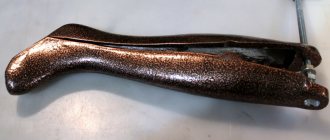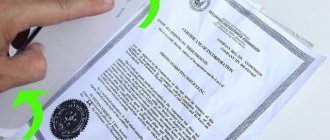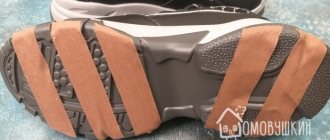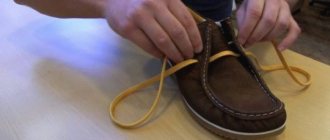Even having successfully chosen the size and bought a pair of shoes you like, difficulties may arise when you have to wear them all the time. For example, a couple begins to press, and it turns out that the size chosen was not such a good one. It’s especially offensive if these are winter or autumn boots - shoes that should protect delicate feet from the influence of cold and dirt.
But since these shoes are designed for the cold season, incidents happen. When trying it on their feet in thin socks when purchasing, people experience an extremely pleasant sensation. But as soon as a person tries to put on shoes or boots with thicker socks, it turns out that the model is tight and it is uncomfortable to walk in it.
In this case, it is important to know how to stretch boots. But this is not so simple, since boots for cold seasons are made of denser material, which is more difficult to stretch than in ordinary shoes.
But this does not mean that such a procedure is impossible. You'll just have to put in a lot more effort.
Where does the boot stretch?
Shoes are a complete structure, but in some places they are more pliable, and in others it is almost impossible to change the parameters. In addition, the peculiarity of winter boots is that they can have a high top, which does not allow the model to fasten properly.
Each place has its own specific stretching. And before you start transforming your shoes, you should familiarize yourself with these features.
In the shin
If you like high boots, a problem may arise when it is difficult to choose models that fit the boot. Moreover, the boot can be the right size and fit perfectly on the foot, but not fasten at the shin area.
Naturally, no one will cut the boot top, but you can try to stretch it. There are several options for how to stretch the boot top at home:
- Professional spray. It is applied inside and outside, after which the shoes are worn on the feet until the spray dries.
- Using available means. This can be a large glass or plastic container. The plastic needs to be filled with water so that it retains its shape, while the boot itself is wetted with hot water.
- Vodka. You can also soak the material with alcohol. It is more effective than water in stretching a mold that is too small.
If necessary, the procedure must be repeated several times.
In caviar
Another difficult area for non-standard legs is the calf. Widening boots in this place is also quite difficult, and there are few ways to help do this.
To loosen the elastic of your boots, you can use the spray that has already been mentioned. This is a universal product for shoes made from natural materials.
If you don’t want to perform unnecessary manipulations on the boot, you can simply smooth the fur with an iron. Then there will be more space and the leg will feel more comfortable.
On the rise
The biggest obstacle is unofficially considered to be the climb. To slightly alleviate the plight of shoes that are too tight, you can use the following methods: damp newspapers and paper, a bag of water and a freezer, and breaking them in.
But none of the presented methods can guarantee an ideal result, because the rise is a very intractable place for transformation.
Why is this necessary?
There are many reasons that make a person stretch their shoes:
- I liked the shoes, but they didn’t have the right size;
- The size fits in length, but is tight in width;
- presses in length and in width is within normal limits;
- becomes cramped in the evening;
- shoes shrunk after the rain.
There are many ways to break in shoes. If you don’t want to do it yourself, you can turn to professionals. The workshop will increase the size using special equipment.
How to stretch boots at home
There are various methods for increasing shoe size that you can easily use at home. Let's consider methods that can be used by anyone, even if this is your first time encountering a similar problem.
Water and freezer
One of the most popular ways to stretch leather shoes at home is the cold. But low temperatures themselves are not enough. For the technology to work, follow the following scenario:
- take a bag that can be sealed tightly and will not leak;
- put it in the boot and try to distribute it evenly inside;
- pour water so that it does not leak out and tie the bag tightly;
- place the boot together with the filled bag in the freezer;
- leave the boots in this position overnight. When the liquid freezes, it will expand, thereby expanding the boot itself;
- the next day, take out the pair and leave for half an hour at room temperature;
- When the water melts slightly, the bags can be pulled out.
- The shoes must be given time to dry and warm up, after which you can start trying them on.
Bottle and pencils
This method is usually used to widen the boot:
- take a bottle (preferably wide enough);
- pour warm, almost hot water into the bottle and place the container in the boot;
- moisten the boot a little with water;
- if there are gaps between the material and the bottle, you can use pencils, pushing them into the free space.
- wait until the shoes dry. It is not advisable to dry it with a hairdryer or something similar. It is important to wait for the steam to dry naturally.
Socks and hairdryer
Another very popular and effective option for stretching winter shoes at home is to warm them up and break them in. To do this, you need a hairdryer and a pair of warm socks, thick enough to make your feet one size larger.
- put on socks and tight boots;
- take a hairdryer and heat the areas where discomfort is felt the most at the highest power;
- Walk around in your shoes until they cool down.
Another option for heat treatment of shoes to help stretch them is to use an iron. To do this you need the following:
- warm up the iron thoroughly;
- place the boot on the ironing board;
- stretch the boot and cover the inside with a damp cloth;
- Iron the boot through the fabric for a few minutes.
After this, the fur, if there is any inside the boot, will be smoothed and slightly reduced in volume.
If there is no fur, the skin itself will be wet and hot, so you can start stretching. When finished, stuff the boot with paper to prevent it from pulling back.
This processing option is ideal for suede material, from which they like to make winter shoes. Ways to use steam 2:
- Bring the shoe to a boiling kettle (pan, bucket), and hold the product over it until it warms up.
- Use an iron with a steam generator or a special steam cleaner.
Then everything is standard - when the shoes are warm enough, put them on your feet with warm socks and walk until the material dries.
Castor oil
Leather boots can be treated with castor oil. If there is no fur inside, this procedure is done both from the outside and from the inside.
After treatment, you need to put on several pairs of socks and wear lubricated shoes for at least an hour. Under the influence of the oil, the skin will soften and gradually thin out a little.
Newspapers
Our grandparents also resorted to stretching shoes. From them we learned this simple method - using newspapers:
- collect old waste paper at home;
- Squeeze it well and soak it in water;
- stuff the shoes tightly, leaving them to dry for a day, or until the paper is dry;
- take out the dry paper.
Alcohol
Soak the inner surface of the shoes with an alcohol solution (water and alcohol 1:1) or vodka. For convenience, you can use a spray bottle. Wear thick socks and walk around in your shoes for about an hour. The pungent odor after the procedure can be eliminated with a soap solution (or simply leave the shoes in the air). Alcohol dries out the skin; After stretching, lubricate your shoes with special cream or Vaseline.
The alcohol solution can be replaced with an alcohol-based window cleaner or cologne.
Use alcohol-containing liquids carefully on colored shoes. Pre-test the paint for durability by treating an inconspicuous area of skin with alcohol.
How to stretch boots made of different materials
Having several pairs of boots in your wardrobe is completely normal for girls, and even for men. When it’s cold outside for six months, you want to change your usual favorite trampled boots a little for something more comfortable. In addition, when the snow melts, it is impossible to go outside without rubber boots, otherwise you are guaranteed to get your feet wet.
For colder times, there are boots with fur, which may also be a little small. As a result, you need to find a way to stretch your boots at home.
It is important to be careful during the stretching process so as not to damage the material. If a sole falling off in the middle of the street in the summer is just an unpleasant moment, then in the winter it can cause frostbite.
To prevent this from happening, you need to know how to stretch shoes depending on the material from which they are made.
Winter with fur
Warm winter boots with fur are a must in our latitudes. You can't do without them in winter. But what to do if these shoes were bought for light socks, and when you had to change into something more substantial, your foot feels uncomfortable?
You can try stretching your boots. But there is a catch - if you choose the wrong method, the fur can mat and the fur boots will no longer be so warm. The least traumatic option is to use warm socks and a hairdryer.
You can try special sprays. They work great on natural leather. But it is better to exclude methods that involve water. The fur will deteriorate, and in winter it will be too cold in such shoes.
Rubber and polyurethane
Breaking in boots made of rubber or polyurethane is not easy. If some compromises can still be found with other materials, in this case you can work hard and still be left without results.
You can stretch rubber boots only if they contain polyvinyl chloride. If not, you'll have to resign yourself to buying a new pair.
Checking the composition is very simple - you need to bring a hot needle to the material. If the boot starts to melt, you can stretch it. If nothing happens, then there is no point in even trying to change your shoe size.
You can increase the size of suitable shoes by applying heat. Simply put, shoes need to be heated and broken in to the desired shape. To avoid getting burned, it is recommended to soak the boot in cold water before putting it on.
Nubuck
Nubuck is a very delicate material that requires careful care. Even wearing it should be done with caution, let alone stretching it. If such shoes are a size larger, there is nothing to worry about, but if they are smaller, they fit on your feet with great difficulty, if you are lucky enough to put them on at all.
If you decide to stretch this type of shoe, remember that you can only use gentle methods: using special foam, wet socks or damp newspapers. It is better not to use the last method if you are afraid that the new thing may become deformed.
Suede and leather
Boots made of genuine leather or suede are quite expensive, so it is very unpleasant when a pair turns out to be small. You can wear suede and leather boots, but it is more difficult to make larger sizes from artificial leather at home, since modern artificial materials melt rather than stretch. They can crack and lose their natural shine, making the shoes less attractive.
Suede is more capricious than leather, so it is easier to ruin it. But most of the methods that are used at home for leather boots are also suitable for suede boots.
The most suitable options for such material are: breaking in and treating with alcohol. The boots are also stuffed with wet waste paper. The options work equally well for suede and leather models.
Rules for using stretch marks sprays
The spray is used if the boots are only a little tight. As a rule, these compositions for shoes are used after long-term storage. The product can be applied to any type of skin.
Step-by-step instructions on how to quickly spray on shoes that are too tight:
- The composition is generously sprayed onto the pinching areas inside the shoes.
- The product is put on and worn by walking around the house for half an hour.
- If necessary, repeat the procedure.
You can buy spray for wearing shoes in any shoe department.
These methods are time-tested, so there is no doubt about their effectiveness. It is worth remembering that thin material will not withstand aggressive influences, since it is not designed for this. Therefore, before breaking in your shoes, you need to try initially gentle methods - they can show excellent results.
Spray the mixture liberally onto the tight areas inside the shoes.
Put the product on and wear it by walking around the house for half an hour
How not to stretch your shoes
Before you begin stretching, you need to understand several features of the procedure and what not to do:
- You cannot stretch rubber and artificial leather boots using the methods that work with natural leather and suede.
- If you are expanding varnished pairs, you must not allow alcohol, vinegar or other aggressive substances to get on the varnish. Sudden temperature changes are also not for patent leather boots.
- It is not advisable to treat boots with chemical sprays without first understanding which chemical is suitable specifically for your shoes.
If you doubt what can and cannot be done with your boots, then it is better to seek help from professionals. This way you definitely won’t ruin the pair and are more likely to get the desired result.
Useful video tips
To get the best possible result, we advise you to additionally watch the video instructions and only then proceed to action.
If you somehow acquired tight boots, then do not rush to get upset. Most likely, this situation can be quickly and easily corrected at home. The main thing is to take your time and show a little patience. Then the new couple will delight you for many more seasons!
Hello, dear Pikabushniks and just readers!
There have been no system posts for a long time. Those interested can see previous posts on my profile - their title includes “Everyday Life of a Shoemaker.” I no longer post links, because we have already looked at a lot of things. So, it’s time for a systemic one to appear.
I wanted to talk about replacing heels with a change in style, as I had planned, but then dear @yuliayuliayulia asked a rather innocent question. I answered it and went about my small business. However, the whole day I had a feeling of unsaidness. And so, late at night (or early in the morning) I decided to make a post about the tops, because anyway, I probably won’t be able to fall asleep without clearing my conscience.
When to take a risk
When asked whether it is possible to stretch the boot top, we will immediately answer: yes! However, you should not count on the fact that you can make a real bell out of a pencil boot. The material used to make shoes is not highly elastic. Trying to stretch it further will only lead to the seam coming apart. When estimating your chances of success, you need to be guided by two considerations.
- If the zipper on the boot comes together, albeit with difficulty and on a stretched leg, you can easily take the pair you like: it will stretch to the desired fullness. There is a little more doubt if the lightning did not reach the top by a centimeter and a half. But if it is only fastened halfway, put it aside. Your experiments will fail.
- Immediately give up the idea of shoes made of leatherette, since it is unrealistic to stretch the top of a boot at home using it. The material is more likely to crack or deform than to agree to change slightly.
And get ready for quite lengthy shoemaking procedures: the process will not be quick.
Iron to the rescue
This is the simplest method of how to stretch a boot top at home. However, it only applies to a limited range of shoes. The leather on boots should not be thin - this is it. The material should not be varnished - that's two. The method is not suitable for huskies - that's three. If all conditions are met, we proceed according to the following algorithm.
- The boot is unfastened and placed on the ironing board as evenly as possible.
- The flannel is well wetted and wrung out so that water does not drip, but the rag is wet, not damp.
- The iron is heated to medium temperature, and the boot is steamed through the fabric.
- When the skin becomes soft and moist, the bootleg is pulled to the sides in the right place. The desired dimensions are measured in advance. You can even just make marks on the board to which you need to reach the boot.
No jerks, just uniformity and persistence! If the boot starts to dry out and tan ahead of time, steaming is repeated. When the goal is achieved, the zipper is zipped, paper is stuffed tightly inside (to prevent shrinkage), and the shoes are left away from the batteries until completely dry.
Freezing shoes
For more delicate materials, another way has been invented to stretch winter boots at the top. It is not suitable for leatherette and rubber. The bottom of the boot, which will not stretch, is stuffed with newspapers so that it does not become deformed. A thick polyethylene bag is placed at the top, into which water is poured. Its volume should correspond to the current thickness of the boot. The air is released from the bag, but it is tied so that there is free space inside. The boot hides in the freezer overnight. The water will expand and stretch the boot. If it turns out that the volume is still insufficient, the process is repeated. The technique is especially good if you need to stretch suede boots: no external influence, which usually leaves stains on the material. Just make sure the freezer is clean. Better yet, to be sure, cover it with clean, dry cloth.
Suede or nubuck
When trying to stretch suede shoes, you need to remember that a wet fleecy surface instantly loses its decent appearance. Avoid options with exposure to moisture and sudden temperature changes.
When caring for suede and nubuck, you should not use oils or creams - they leave greasy stains that cannot be removed. Mechanical action works best.
Massage the boots thoroughly with your hands. Walk around in them for a few hours. Most often, this is enough to stretch suede or nubuck, because the natural material is quite elastic.
If that doesn't work, try making a steam bath:
- Pour silent water into a large saucepan and bring to a boil.
- Place a colander on top. It should not come into contact with liquid.
- Wrap the inside of suede shoes with a thin towel or cloth napkin.
- Place the pair in a colander, sole side up.
- Wait 2-3 minutes. Overheating is undesirable.
- Take out your shoes and put them on.
- You can stretch the narrow top of suede boots using a damp textile cloth and an iron. Place the fabric inside and iron at low temperature. After delicate processing, the boots will fit perfectly on your calf.
Gentle heating
The exact opposite option of how to stretch a boot top at home: now we will use increased temperature. The method can be called a softened version of the very first one. Suitable for any natural materials, but heavier for the owner of boots. Stubborn shoes are pulled onto your feet with difficulty and creaking. Moreover, you need to wear thick socks underneath, which will hold back the shrinkage a little later. In places where the boot does not fit well, it is diligently, for at least half an hour, warmed up with a hair dryer turned on at maximum. Afterwards, the owner of the shoes must walk in them until the boots cool down. It is advisable to actively move while doing this, this will help the boot to take the shape as close as possible to your leg. If your leather or suede boots are not fastened all the way the first time, after cooling, the zipper is brought all the way and the manipulations are repeated.
Cowboy way
In the Wild West, grain was used to stretch leather boots. They filled shoes with it, filled it with water and left it overnight. The grain absorbed water, swelled and stretched the skin. In the morning, the shoes were freed from the filling, wiped and worn until dry.
This method has the right to exist today. However, it cannot be used for lined shoes
We use primitive chemistry
The following technique can also help in the case of stretching artificial leather shoes. You will need vodka (pure, without any additives like birch buds or quail eggs) or medical alcohol. The latter will need to be diluted to 70 percent strength. In a more concentrated form, alcohol can damage natural materials. Some masters use vinegar essence. However, in addition to a sharp and persistent odor, it can discolor the surface. Suede is especially vulnerable in this regard - even its structure can be damaged. The required areas are generously sprayed or coated generously with the solution. It is advisable that it does not fall on non-stretchable areas. Alcohol evaporates very quickly, so it is better to carry out the procedure with boots already on, with the participation of a sympathetic family member. And, again, thick socks should be worn underneath. To consolidate the effect, you need to walk in shoes for half an hour (more is better, but not necessary, since the alcohol will have time to evaporate during this time). If necessary, you can repeat the process tomorrow.
Professional products
We left them for last for several reasons. Firstly, they will extract more funds from the budget. Secondly, you need to take their composition extremely seriously and read the instructions carefully: they may have a narrowly targeted effect and will not suit your shoe material. Thirdly, most of them are toxic, and can only be used on the balcony (which is not good for you or your boots). Finally, they need to be tested first in an inconspicuous area as they can cause discoloration and warping. If you decide to resort to this method of how to stretch the top of leather boots, it will be enough to buy a suitable spray and follow the manufacturer’s instructions.
Mechanical Tension Pads
They are produced in wood, metal, silicone, and plastic. The latter are cheaper. They do not absorb odors and moisture.
A mechanical shoe spacer is inserted inside the shoe. It is designed to provide targeted stretching as well as increasing fullness and volume. The device is used to correct shoes for hallux valgus, high arches, and foot deformities that do not allow wearing a pair that fits properly.
The stretching block is equipped with built-in mechanisms. With their help, an individual leg model is created. When secured inside the product, it will stretch the material in the desired direction by a given amount.
Before using a mechanical stretcher, it is recommended to apply an aerosol or cream to the inner surface. This will speed up the process without damaging the shoes. When choosing, carefully select the size - devices are designed for a given range. Read the instructions before use.
If all else fails
It’s one thing if you’re just buying boots - you can refuse to purchase them even before going to the checkout if you can’t fasten them. However, what if your calves have gained weight (for example, due to pregnancy), and your boots are new, expensive and beloved? If none of the suggested recipes for how to stretch a boot top at home helped, go to a shoemaker. Long tops can be cut, an elastic wedge can be inserted, and cuffs can be made. Choose an option that suits your tastes and money and don’t give up on comfortable boots!











